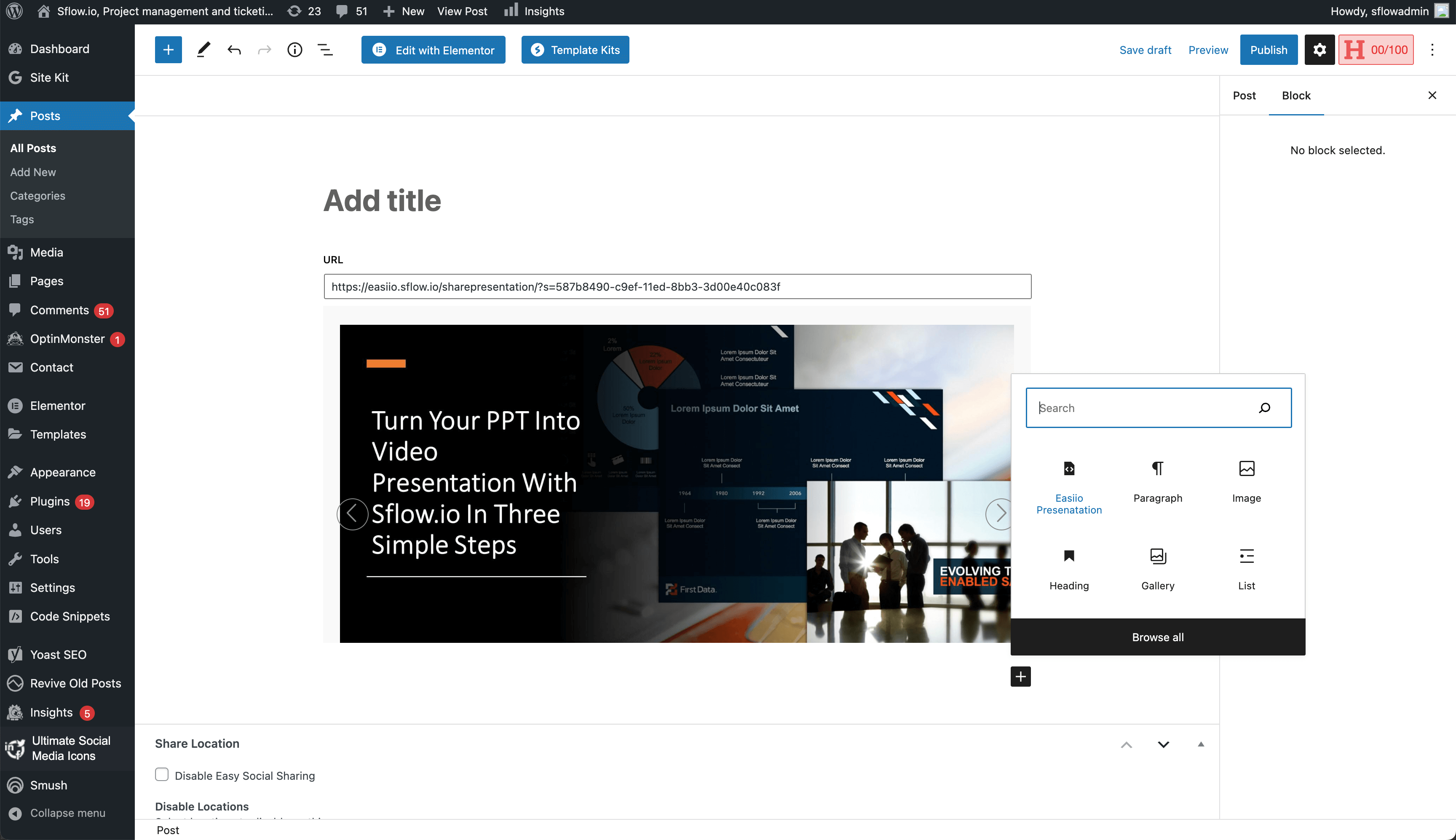

 Sflow
Sflow






WordPress Plugin
The sFlow Video Presentation WordPress Plugin lets you embed video presentations effortlessly on your WordPress website or blog, without worrying about compatibility issues.You can do a search on WordPress Plugin. It's easy to use and integrates smoothly with WordPress, making it perfect for business owners, educators, or anyone who wants to add engaging video content to their website.
 Sflow
Sflow








WordPress Plugin
The sFlow Video Presentation WordPress Plugin lets you embed video presentations effortlessly on your WordPress website or blog, without worrying about compatibility issues.You can do a search on WordPress Plugin. It's easy to use and integrates smoothly with WordPress, making it perfect for business owners, educators, or anyone who wants to add engaging video content to their website.


Traditional project management and Agile project management are two distinct approaches to managing projects. In traditional project management, the focus is on detailed planning, strict adherence to a predetermined schedule, and a linear progression of tasks from start to finish. This approach works well for projects with clear requirements and stable scope. On the other hand, Agile project management is a more flexible and iterative approach that emphasizes collaboration, adaptability, and continuous improvement. Agile projects are divided into smaller increments called sprints, allowing for frequent feedback and adjustments to be made throughout the project lifecycle. The key difference between the two approaches lies in their flexibility and adaptability to change. Traditional project management is better suited for projects with well-defined requirements, while Agile project management is ideal for projects with evolving or uncertain requirements.
The main technology that sets apart traditional project management from agile project management is the use of project management software. Traditional project management relies heavily on tools like Gantt charts and critical path analysis to plan and track progress, while agile project management utilizes software such as Jira or Trello for managing tasks and sprints in a more flexible and collaborative manner. These digital tools enable teams to adapt quickly to changes, communicate effectively, and deliver value incrementally. In summary, the adoption of project management software is a key technological difference between traditional and agile project management methodologies.


Traditional project management and Agile project management are two distinct approaches to managing projects. To find the great difference between them, it is important to understand their key characteristics. Traditional project management follows a linear and sequential process, with a focus on detailed planning, strict adherence to timelines and budgets, and a hierarchical structure of decision-making. On the other hand, Agile project management is iterative and flexible, with a focus on collaboration, adaptability to change, and delivering value to customers in short increments. The main difference lies in their approach to handling uncertainty and change - traditional project management aims to minimize risks through comprehensive planning, while Agile project management embraces change as a natural part of the process and responds quickly to feedback. In summary, the key difference between traditional and Agile project management lies in their approach to planning, flexibility, and response to change.

Leverage the power of agile methodologies and AI tools to enhance team collaboration and project success.



01. Kanban view

02. List view

03. Calendar view

04. Github integration

05. Sprint

06. Release

07. Burn down chart

08. Gantt chart

Agile methodologies are widely used in software development for iterative progress and continuous improvement.

Agile project management helps in planning and executing marketing campaigns with flexibility and adaptability.

Agile facilitates rapid prototyping and iterative feedback in product development.

Agile methodologies ensure efficient and adaptable event planning and execution.Agile methodologies ensure efficient and adaptable event planning and execution.

Agile tools improve team communication and collaboration, leading to better project outcomes.

Agile methods allow for quick adjustments based on feedback and changing requirements.

Agile tools streamline workflows and reduce bottlenecks, enhancing overall team productivity.

Continuous testing and feedback in Agile ensure higher quality deliverables.

Agile reduces waste and focuses on delivering value, leading to cost savings.

Agile methodologies encourage regular project reviews and updates, increasing team transparency regarding project progress and goals.

InnovateTech Solutions Chief Product Officer

BrightWave MarketingCampaign Strategy Director

Precision Manufacturing Group Project Management Director
By using Your Website Name,
you agree to our Cookie Policy.